
A 6-Step Crash Course in Restaurant Digital Marketing
posted on
It’s important for your restaurant business to be where your customers are: online. In fact, 8 out of 10 adult Americans go online almost daily. Digital marketing, or online marketing, is how your business reaches and connects with customers and potential customers, and promotes your brand. Consider this your crash course on restaurant digital marketing.
Here’s what we’ll cover for your restaurant’s digital marketing strategy:
- Make or improve your website
- Get on social media, especially Instagram and Facebook—and share relevant content at least once a week
- Create a Google My Business page
- Make profiles for your restaurant business on relevant review sites
- Start an email list and use email marketing to promote your brand
- Partner with relevant brands, like Foodee corporate catering, to reach more customers
Let’s dive into these different methods you can use to boost your online presence and digital marketing chops. Follow these tips, tools, and tricks to start setting your restaurant business up for digital marketing success.
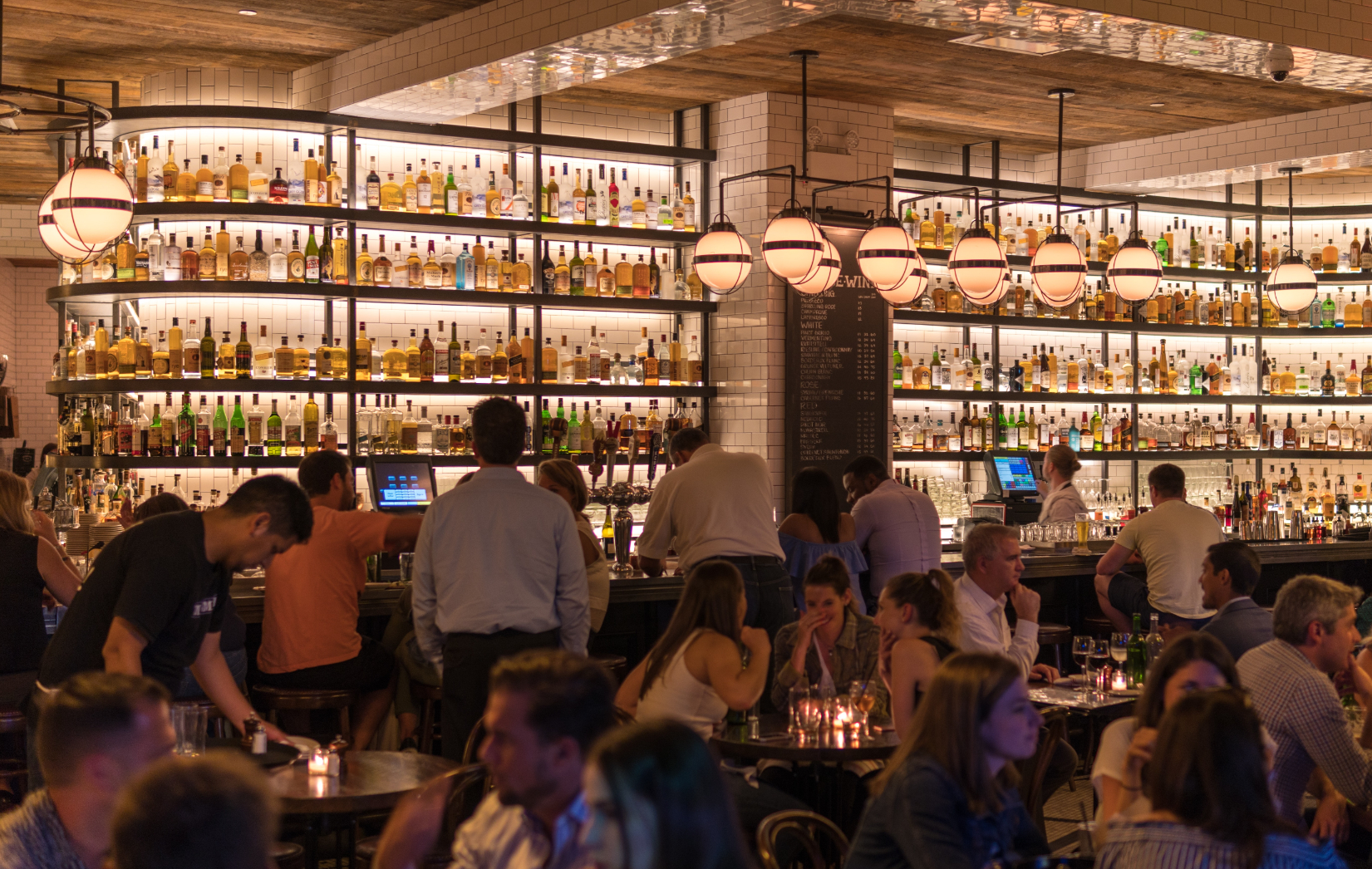
What is Restaurant Digital Marketing—and Why is it Important?
You decorated your restaurant, developed dishes, designed a menu, chose a name, and created a brand for your restaurant. Extend your brand—and the time and effort that you put into your brick-and-mortar business—online. Think of online as your new front door.
Your website and presence on social media, search engines, review sites, and partner websites should showcase your restaurant’s brand in a deliberate and effective way to reach your target customers. This is digital marketing.
Why is it important? In 2021, 4.9 billion people worldwide were online. They’re on mobile apps, search engines, social media, email, and online streaming. Let’s say that your restaurant pops up in a local Google Maps search that leads a potential customer to your website, or online reviews and customer photos of your dishes, or to your Instagram profile. Would they visit your restaurant based on this “online journey”?
Online Marketing Tip: Search your restaurant in incognito mode.
- What does (and doesn’t) come up?
- What does your online presence say about your restaurant’s brand?
- What can be improved?
6 Tips to Improve Your Restaurant’s Digital Marketing Chops
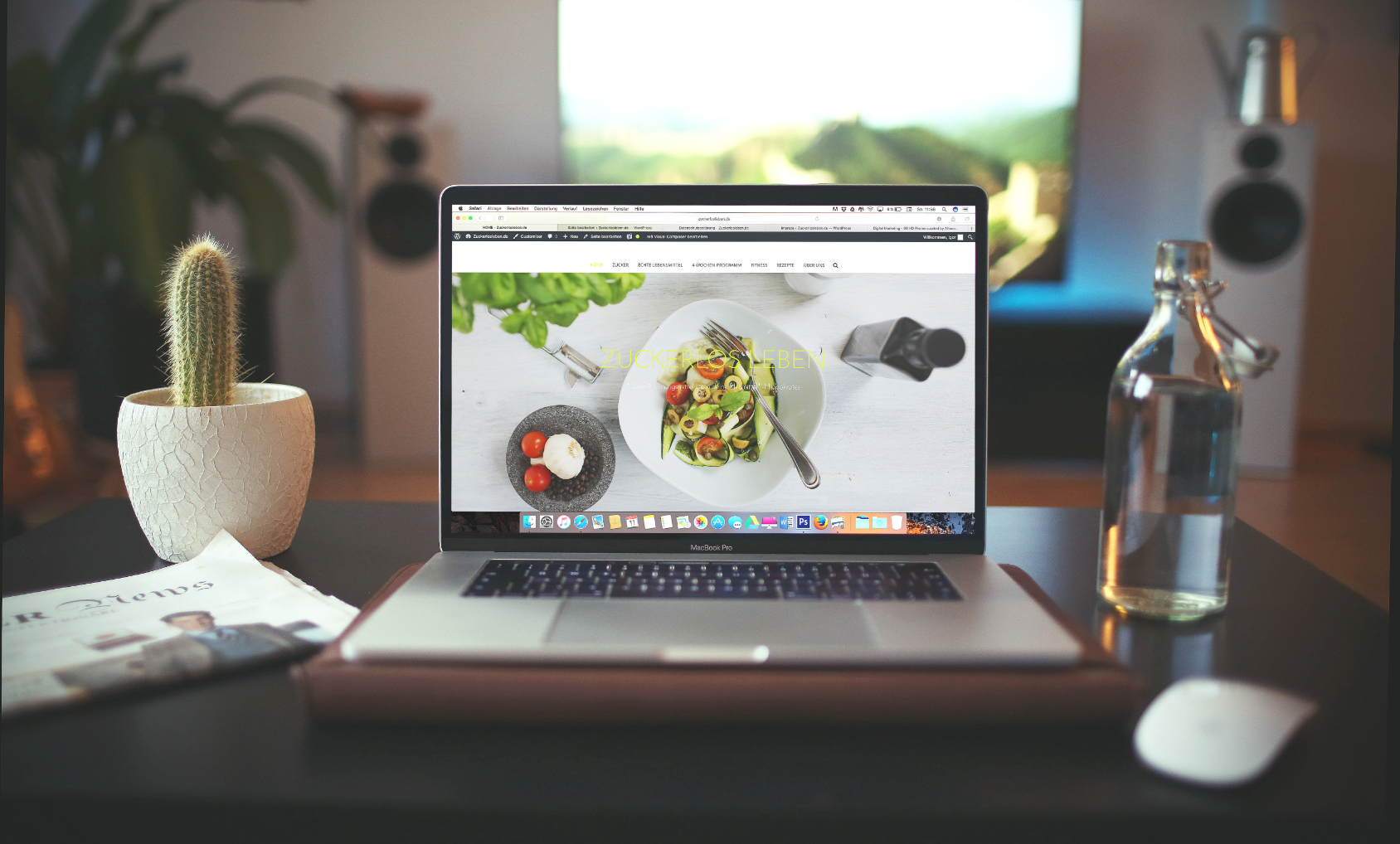
1. Make or Improve Your Website
If you’re only going to follow one of these 6 steps (which we don’t recommend), it’s this one. A good website is key to growing your restaurant business. It’s an extension of your business and brand and how search engines and potential customers find your business to learn more. A good website must include:
- Your restaurant’s logo
- Good photographs of your restaurant and food
- Your restaurant’s location and hours
- Your menu
- A concise “about us” section
- Featured positive reviews and testimonials—and links read more online
- Links to social media sites
- Links to delivery, takeout, and catering partners
- Online ordering option if applicable
There are lots of great and easy-to-use apps for building and hosting websites, including WordPress, Squarespace, and Wix, many of which have pre-designed templates. Find one that works with your brand and looks good on both desktops and mobile.

2. Get on Social Media, Especially Instagram and Facebook
In 2021, 72% of Americans use social media. Worldwide, Facebook is the most-used social media platform; Instagram is the fourth. Restaurants use both channels for free and relatively easy marketing, but there are many social media channels that you can join. Just make sure that you’re not spread too thin to post consistently: 30% of millennial eaters actively avoid restaurants with a “weak Instagram presence.”
Here are some ideas of what to share on social media:
- High-quality photos of your food
- Showcase your restaurant
- Connect with customers
- Repost customer content such as tagged photos of your dishes
- Share menu updates and post photos of your daily or weekly menu
- Promote events and encourage people to attend them
- Share links to relevant articles and magazine features
- Post about awards or contests
- Update restaurant hours and locations if they’ve changed
- Share high-quality videos behind-the-scenes in the kitchen or making dishes
- Share links to recipes and blog posts if you have them
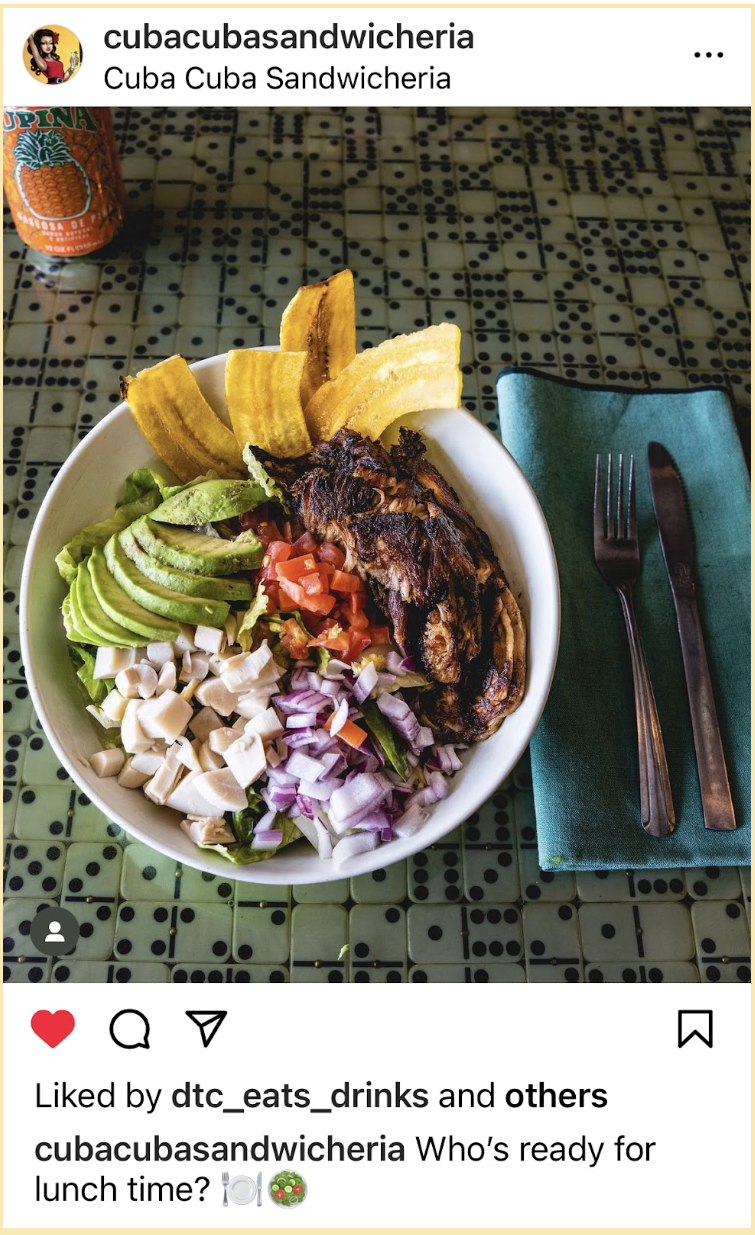
Tips for starting your social media presence:
- Create a Facebook and Instagram business profile with your restaurant’s name, location, and website link
- Add your business logo and your best image of your restaurant or food
- Follow these tips for taking great food photographs
- Follow your friends and customers, relevant local businesses, and inspiring restaurants and brands
- Research any other relevant social media channels where your customers are, such as TikTok or Twitter.
As a rule of thumb, post on your social channels consistently at least once a week to keep your followers engaged. Think of social media as a fun, creative, and branded way to connect with your customers and reach new ones.

3. Create a Google My Business Page
According to a Google study, 4 out of 5 customers use search engines to find local information. This includes searching for local restaurants like your business. A “Google My Business” profile is a free online marketing tool that will help you share important information fast with your customers.
How it works:
- Sign up for your business profile and add important information like:
- Business name
- Address (this links directly to a Google Map for directions)
- Phone number
- Website
- Hours
- Restaurant write-up
- Online reservation system
- Options for dining in, take-out, and delivery
- Google reviews and stars system
- Social media links
Anytime someone searches for your restaurant in Google, your business’ Google profile will appear in the top of the Google search results page. This makes it easy for potential customers to learn more about your business, book a table, order online, or find your location.
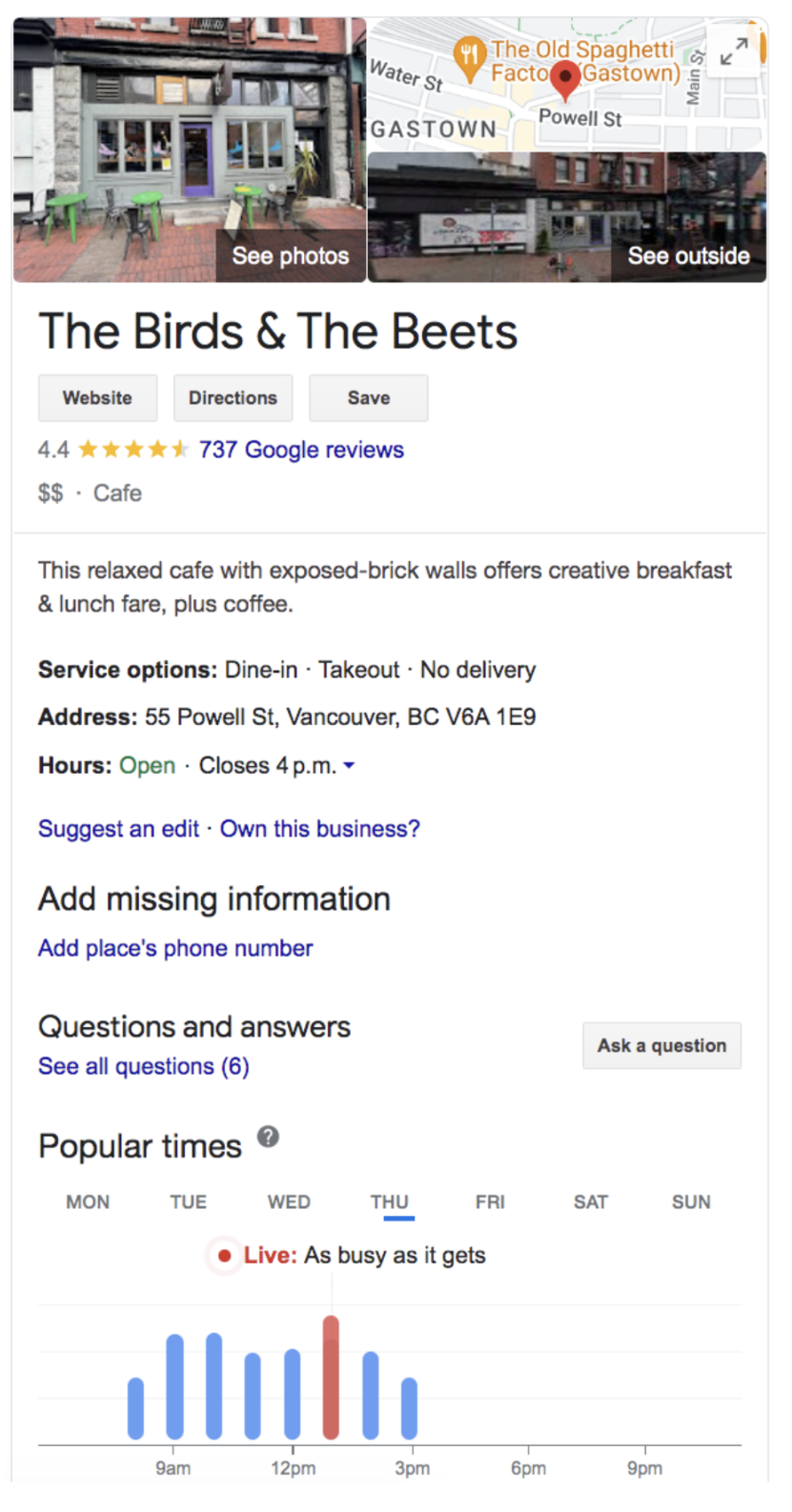

4. Make Profiles for Your Restaurant Business on Review Sites
Yes, restaurant reviews can be scary and you may want to avoid setting yourself up for potential disaster. Reviews can, after all, make or break your business. But 82% of customers read online reviews before they visit a business. They’re essential for all businesses, no matter the industry. If you’re doing great things, your customers will give you great ratings. Plus, loyal customers often stand up for local businesses they love if haters are, well, hating. It’s also a great opportunity for you to hear what your customers have to say and make changes to bring more people in and keep everyone happy.
Here are some online review sites to consider joining:
- Google My Business (also for the reasons mentioned above)
- Yelp
- OpenTable
- TripAdvisor
- Foursquare
- Zomato
- Zagat
Do some research into what other local restaurants, competitors, and like-minded brands are doing. Consider how much time and effort you can dedicate to keeping an eye on these sites and then sign your business up for some.
Online Review Tip: Ask your loyal customers to review you and give them a discount or free dish once they review your restaurant.

5. Start an email list and use email marketing to promote your brand
Email is another great way to connect with customers and potential customers. There are lots of easy (and free or low-cost) email marketing tools to consider, such as MailChimp. Once you have your website up and running, add a section where people can sign up to join your email list. You can also promote your email in your restaurant and on your social channels.
As you build your email following, think of what you would like to share with them, such as menu updates, giveaways and discounts, events, recipes, and other news. If you use a tool like MailChimp, they have pre-designed templates for you to simply plug in your written content, branded images, logo, review, and send.
6. Partner With Relevant Brands to Reach More Customers
Partnering with relevant brands in the food industry can be a great way to expand your restaurant’s digital marketing reach, as well as generate new revenue streams. For instance, Foodee offers corporate catering to some of the U.S. and Canada’s top organizations. We partner with local restaurants like yours in cities across North America to deliver and serve your dishes at offices.
If your restaurant business serves delicious breakfasts, for instance, we can help you deliver your breakfast catering for morning meetings in offices around your city. Our clients and potential customers can search for “breakfast catering in Silicon Valley”, “gluten-free catering in Toronto” or “Taco Tuesday in Austin” and your restaurant may pop up in Foodee. We can help you boost your web visibility and discoverability, increasing your online sales by having your menu and business featured on Foodee’s online ordering platform for restaurant partners.
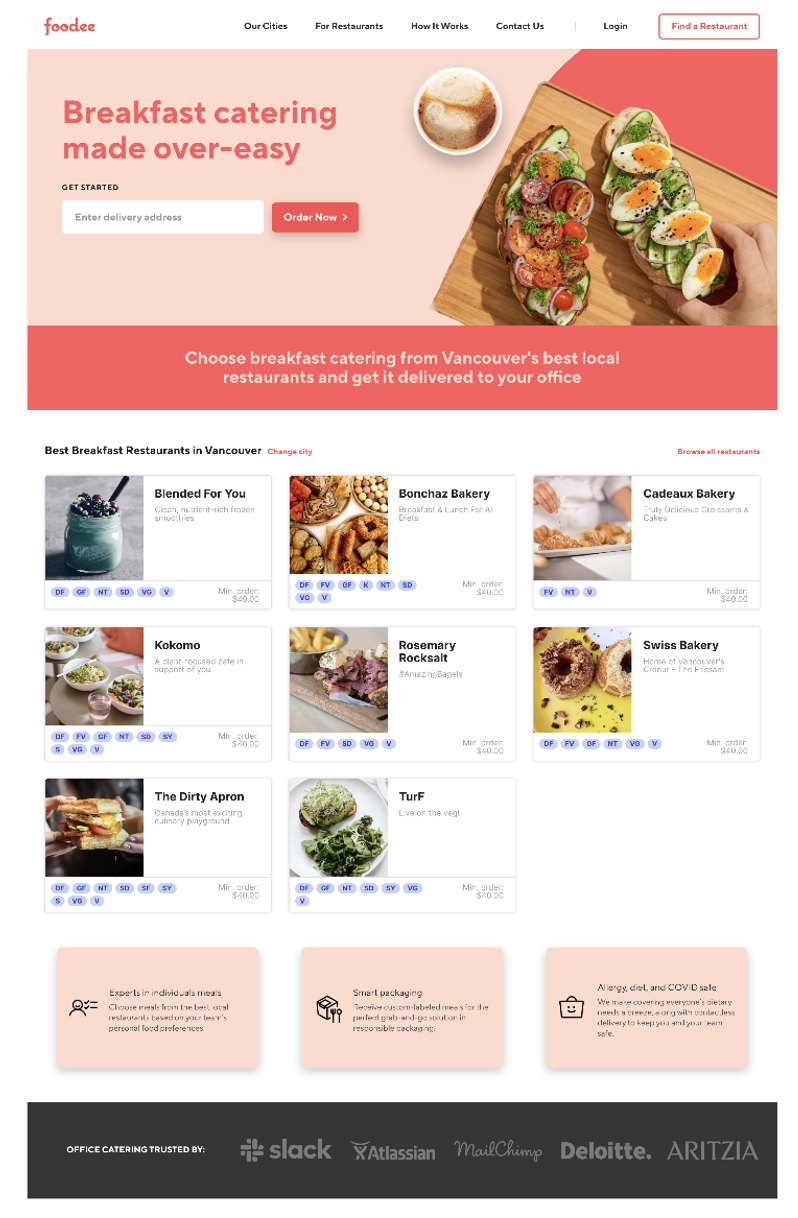
Discover more about Foodee’s restaurant partnerships.
Learn moreFiled Under: Restaurant Success Tips